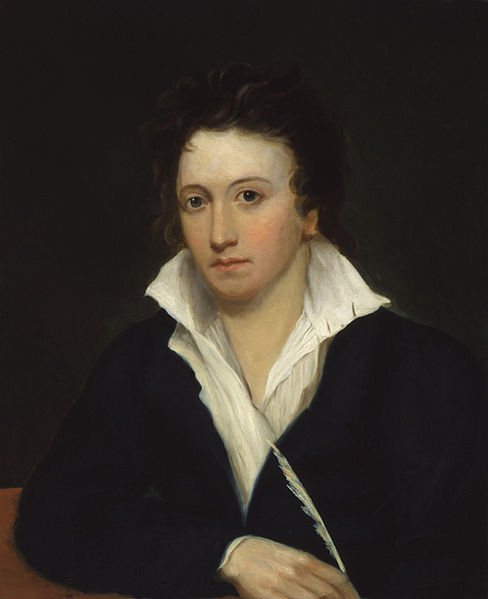"Ozymandias" is a sonnet written by the English Romantic poet Percy Bysshe Shelley (1792–1822). It was first published in the 11 January 1818 issue of The Examiner of London.
The poem was included the following year in Shelley's collection Rosalind and Helen, A Modern Eclogue; with Other Poems, and in a posthumous compilation of his poems published in 1826.
Shelley's "Ozymandias" in The Examiner
The statue fragment of Ramesses II, the Younger Memnon, in the British Museum.
1817 draft by Percy Bysshe Shelley, Bodleian Library.
Percy Bysshe Shelley was a British writer who is considered as one of the major English Romantic poets. A radical in his poetry as well as in his political and social views, Shelley did not achieve fame during his lifetime, but recognition of his achievements in poetry grew steadily following his death, and he became an important influence on subsequent generations of poets, including Robert Browning, Algernon Charles Swinburne, Thomas Hardy, and W. B. Yeats. American literary critic Harold Bloom describes him as "a superb craftsman, a lyric poet without rival, and surely one of the most advanced sceptical intellects ever to write a poem."
Portrait by Alfred Clint, 1819
William Godwin in 1802, by James Northcote
Posthumous Portrait of Shelley Writing Prometheus Unbound in Italy – painting by Joseph Severn, 1845
The Funeral of Shelley by Louis Édouard Fournier (1889). Pictured in the centre are, from left, Trelawny, Hunt, and Byron. In fact, Hunt did not observe the cremation, and Byron left early. Mary Shelley, who is pictured kneeling at left, did not attend the funeral.







